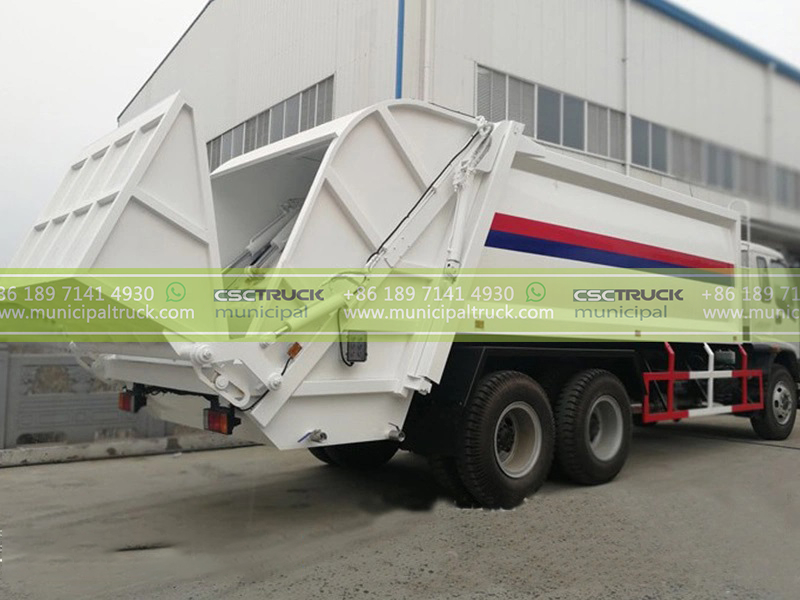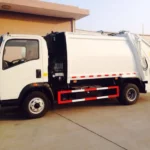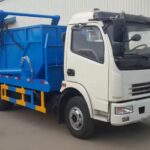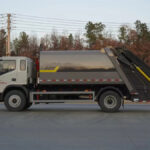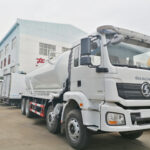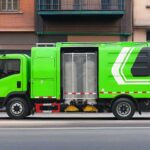Strategic Reinvention of High-Altitude Waste Logistics
As Costa Rica accelerates its 2050 carbon neutrality roadmap, the San José Metropolitan Council has deployed 15 ISUZU-powered rear loader garbage trucks through a ₡6.8 billion ($12.3 million) tripartite agreement between CSUZTRUCK Municipal, ISUZU Vehicles, and Costa Rica Zero Waste Solutions (CRZWS), the nation’s dominant waste management conglomerate. This intervention targets critical inefficiencies across the capital’s 23 high-density districts—where mountainous terrain and 78% daily collection route gradients historically increased diesel fleet emissions by 40% compared to coastal cities. Designed specifically for the Central Valley’s 1,150-meter elevation, the fleet supports Costa Rica’s Urban Circularity 2035 initiative by eliminating 5,200 tonnes of annual CO₂ equivalent across routes serving 1.4 million residents.
The CSCTRUCK-ISUZU RL-7H units, operational ahead of the September legislative session on Extended Producer Responsibility laws, feature integrated mild-hybrid systems recovering braking energy during descents from hillside communities like Escazú and Curridabat. Equipped with 22 m³ compaction chambers fortified for handling volcanic soil-contaminated construction waste, each truck processes 35 tonnes daily while navigating 3.5-meter-wide colonial-era streets in the historic Carmen district. “This transcends waste collection—it embodies our commitment to harmonizing urban services with tropical ecosystems,” declared Environment Minister Franz Tattenbach Capra at the inauguration, projecting 90% reduction in nitrogen oxide emissions near critically endangered Monteverde cloud forest corridors.
Engineering Precision for Tropical Highland Operations
Tropical Engineering Innovations
Optimized for Costa Rica’s volatile microclimates—from 95% humidity in rainy season to 32°C dry-season temperature differentials—the trucks incorporate four proprietary ISUZU-CSCTRUCK systems:
- Altitude-compensating turbochargers maintaining 300 hp output at 1,500-meter elevations
- Regenerative hydraulic circuits converting descent energy into 15 km of electric-only operation in pedestrian zones
- Enhanced corrosion matrices resisting sulfuric compounds from Poás volcanic emissions
- Low-profile compaction rams enabling operation under Guanacaste tree canopies in heritage neighborhoods
These innovations overcome traditional combustion limitations in oxygen-thin environments, with ISUZU 4HK1-TCS engines certified 60% cleaner than Euro VI standards despite 35% average route inclines. Independent testing by the Costa Rica Technological Institute confirmed particulate emissions below 0.01 g/kWh during 18-hour shifts across the Carpintera Mountain passage.
Smart City Integration
Synced with San José’s Cantonal Sustainability Platform, the fleet employs topographic intelligence algorithms that dynamically adjust:
- Compaction ratios based on real-time waste composition data from 2,100 smart bins
- Gearshift patterns using 3D elevation mapping of Moravia’s serpentine roads
- Hybrid-electric deployment zones near sensitive sites like La Sabana Metropolitan Park
“Legacy trucks wasted 28% of fuel climbing steep grades partially loaded,” explained CRZWS Operations Director Marcela Vargas. “The new system aggregates neighborhood waste into optimized clusters, reducing hill ascents by 76% while prioritizing electric mode near 68 schools.” Drivers utilize augmented reality visors highlighting pedestrian hotspots and UNESCO-protected architectural zones.
Integrated Environmental Impact and Operational Transformation
The deployment’s environmental calculus extends beyond emissions, with embedded moisture sensors in compaction chambers minimizing leachate formation during 4,000 mm annual rainfall—critical for protecting the Virilla River watershed from landfill runoff. Noise suppression technology maintains operation below 72 dB in residential areas between 5:00–22:00, aligning with Costa Rica’s pioneering Nocturnal Ecology Protection Statutes. Maintenance protocols developed jointly by ISUZU and Costa Rica’s National Training Institute (INA) enable 98% component remanufacturing at San José’s refurbished La Uruca workshops.
Quantified outcomes from the pilot phase reveal systemic efficiencies:
- Route consolidation: 14 merged collection circuits, reducing fleet mileage by 22,000 km monthly
- Carbon sequestration equivalence: Annual emissions reduction matching 8,800 mature rainforest trees
- Public health co-benefits: 53% decrease in respiratory incidents near transfer stations per the Health Ministry monitors
- Circular resource flows: Recovered diesel fleet parts repurposed for municipal farming equipment
Central American Technology Hub Development
The CSCTRUCK-ISUZU-CRZWS consortium has established Central America’s first Highland Waste Vehicle Innovation Campus in Heredia, featuring:
- Central America’s only ISO-certified hybrid drivetrain testing facility
- Training programs for 90 technicians from Guatemala to Panama
- Prototype development for mountainous hook loader garbage truck derivatives
- Compact skip loader garbage truck platforms for deployment in Cartago’s volcanic soil regions
Localization clauses mandate 35% Costa Rican content by 2027, including locally manufactured titanium-reinforced hoppers and coffee pulp biocomposite interior panels. “These rear loaders catalyze our broader waste infrastructure transformation,” stated CRZWS CEO Laura Chinchilla, revealing imminent trials of blockchain-enabled waste tracking pods at transfer stations. With Phase 2 commitments securing deployment in Liberia and Limón provinces—and Panama City’s sanitation authority initiating technical exchanges—San José’s fusion of altitude-optimized engineering with circular economy principles establishes a replicable model for highland cities across Latin America.
This initiative supports Costa Rica’s National Decarbonization Plan 2022–2050, targeting 100% zero-emission urban logistics. ISUZU confirms identical highland-specification fleets will deploy in Colombia’s Bogotá and Ecuador’s Quito by Q4 2026, adapted for Andean megacity operations.

